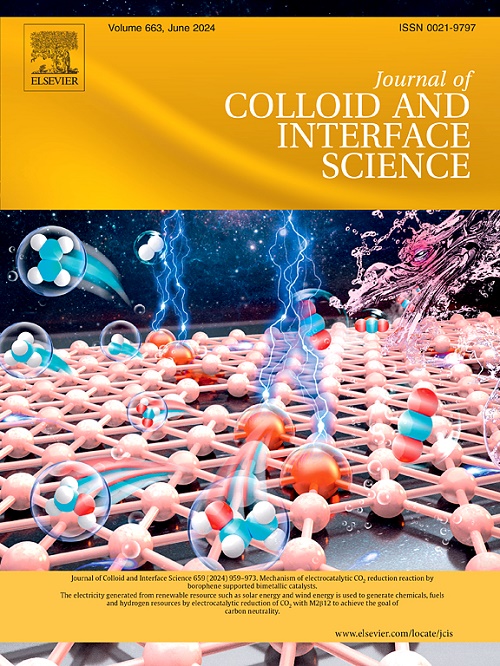Co-delivery of doxorubicin and glycyrrhetinic acid via acid/glutathione dual responsive nano-prodrug with sodium bicarbonate carry-on for advanced combinational cancer treatment
IF 9.4
1区 化学
Q1 CHEMISTRY, PHYSICAL
引用次数: 0
Abstract
The combination of doxorubicin (Dox) and glycyrrhetinic acid (GA) has been widely explored for treating various cancers, while the heterogeneous distribution, uncontrolled release and acid tumor microenvironment often hinder their synergistic effects. Herein, we introduce an acid/glutathione (GSH)-dual responsive nano-prodrug (AS1411@Dox+GA/NPs) enabling precise co-delivery of Dox and GA for enhanced combination therapy. The GSH-activated Dox prodrug [Poly(lactic-co-glycolic acid)-disulfide-Dox, PLGA-ss-Dox], GA, and sulfur-terminated D-α-tocopherol polyethylene glycol succinate (TPGS-SH) are combined to form a nanoemulsion with sodium bicarbonate (NaHCO3) in the aqueous phase. The AS1411 aptamer is modified on the surface for tumor-specific targeting. Upon reaching the tumor via enhanced penetration and retention effects, AS1411 aptamer medicates specific endocytosis of AS1411@Dox+GA/NPs into tumor cells. Intracellularly, the acidic endosomal environment promotes carbon dioxide (CO2) production from NaHCO3, disrupting the nanoemulsion and causing a burst release of GA and PLGA-ss-Dox prodrug. Concurrently, high levels of GSH in the cytoplasm triggers the cleavage of the disulfide linker, thereby releasing Dox. Notably, the released NaHCO3 consumed hydrogen ion (H+), amplifying the sensitivity of tumor cells to Dox. As a consequence, AS1411@Dox+GA/NPs exhibits remarkable synergistic therapeutic efficacy in mouse models of both liver cancer and breast cancer. This work presents an appealing approach utilizing stimuli-sensitive nano-prodrug for advanced combinational cancer treatment.

求助全文
约1分钟内获得全文
求助全文
来源期刊
CiteScore
16.10
自引率
7.10%
发文量
2568
审稿时长
2 months
期刊介绍:
The Journal of Colloid and Interface Science publishes original research findings on the fundamental principles of colloid and interface science, as well as innovative applications in various fields. The criteria for publication include impact, quality, novelty, and originality.
Emphasis:
The journal emphasizes fundamental scientific innovation within the following categories:
A.Colloidal Materials and Nanomaterials
B.Soft Colloidal and Self-Assembly Systems
C.Adsorption, Catalysis, and Electrochemistry
D.Interfacial Processes, Capillarity, and Wetting
E.Biomaterials and Nanomedicine
F.Energy Conversion and Storage, and Environmental Technologies

 求助内容:
求助内容: 应助结果提醒方式:
应助结果提醒方式:


